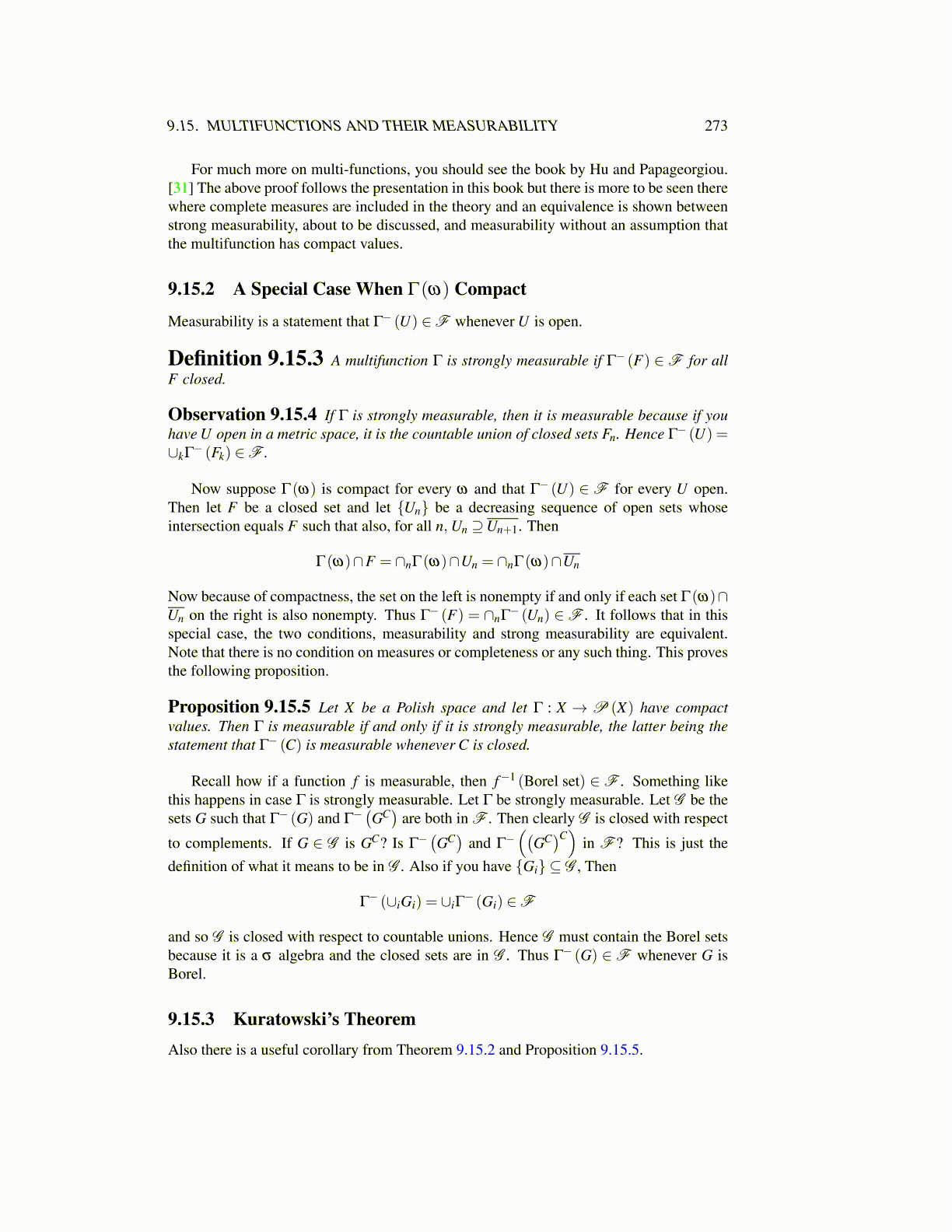
9.15. MULTIFUNCTIONS AND THEIR MEASURABILITY 273
For much more on multi-functions, you should see the book by Hu and Papageorgiou.[31] The above proof follows the presentation in this book but there is more to be seen therewhere complete measures are included in the theory and an equivalence is shown betweenstrong measurability, about to be discussed, and measurability without an assumption thatthe multifunction has compact values.
9.15.2 A Special Case When Γ(ω) Compact
Measurability is a statement that Γ− (U) ∈F whenever U is open.
Definition 9.15.3 A multifunction Γ is strongly measurable if Γ− (F) ∈F for allF closed.
Observation 9.15.4 If Γ is strongly measurable, then it is measurable because if youhave U open in a metric space, it is the countable union of closed sets Fn. Hence Γ− (U) =∪kΓ− (Fk) ∈F .
Now suppose Γ(ω) is compact for every ω and that Γ− (U) ∈ F for every U open.Then let F be a closed set and let {Un} be a decreasing sequence of open sets whoseintersection equals F such that also, for all n, Un ⊇Un+1. Then
Γ(ω)∩F = ∩nΓ(ω)∩Un = ∩nΓ(ω)∩Un
Now because of compactness, the set on the left is nonempty if and only if each set Γ(ω)∩Un on the right is also nonempty. Thus Γ− (F) = ∩nΓ− (Un) ∈F . It follows that in thisspecial case, the two conditions, measurability and strong measurability are equivalent.Note that there is no condition on measures or completeness or any such thing. This provesthe following proposition.
Proposition 9.15.5 Let X be a Polish space and let Γ : X → P (X) have compactvalues. Then Γ is measurable if and only if it is strongly measurable, the latter being thestatement that Γ− (C) is measurable whenever C is closed.
Recall how if a function f is measurable, then f−1 (Borel set) ∈F . Something likethis happens in case Γ is strongly measurable. Let Γ be strongly measurable. Let G be thesets G such that Γ− (G) and Γ−
(GC)
are both in F . Then clearly G is closed with respect
to complements. If G ∈ G is GC? Is Γ−(GC)
and Γ−((
GC)C) in F ? This is just the
definition of what it means to be in G . Also if you have {Gi} ⊆ G , Then
Γ− (∪iGi) = ∪iΓ
− (Gi) ∈F
and so G is closed with respect to countable unions. Hence G must contain the Borel setsbecause it is a σ algebra and the closed sets are in G . Thus Γ− (G) ∈F whenever G isBorel.
9.15.3 Kuratowski’s TheoremAlso there is a useful corollary from Theorem 9.15.2 and Proposition 9.15.5.